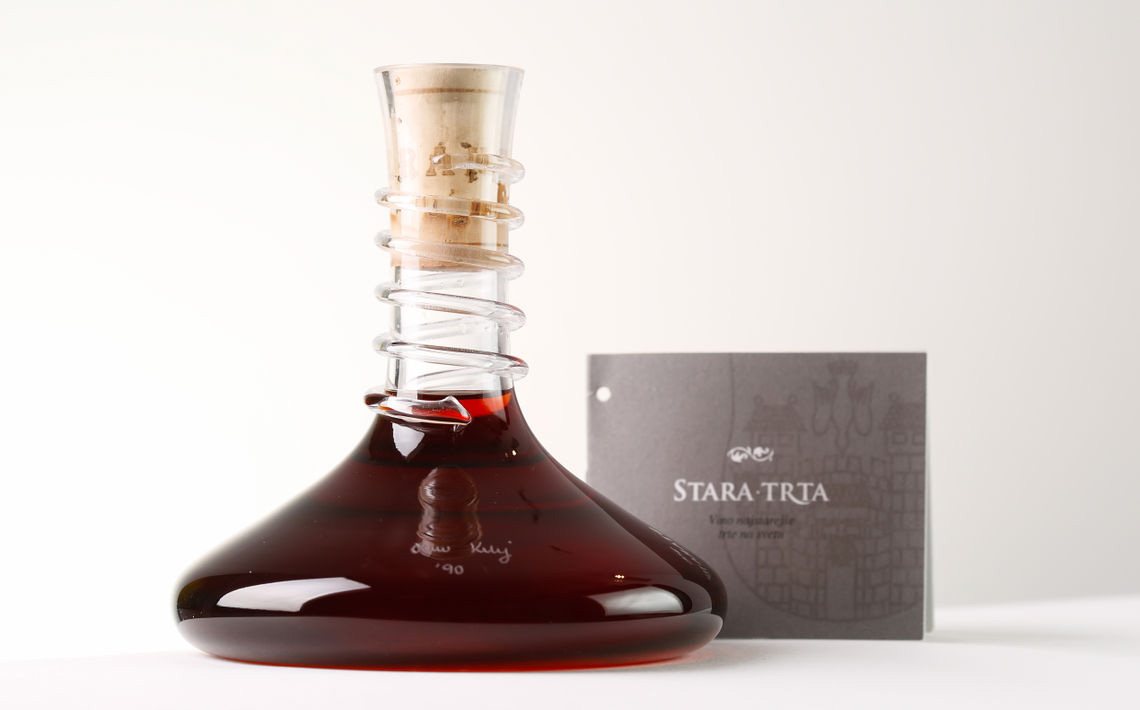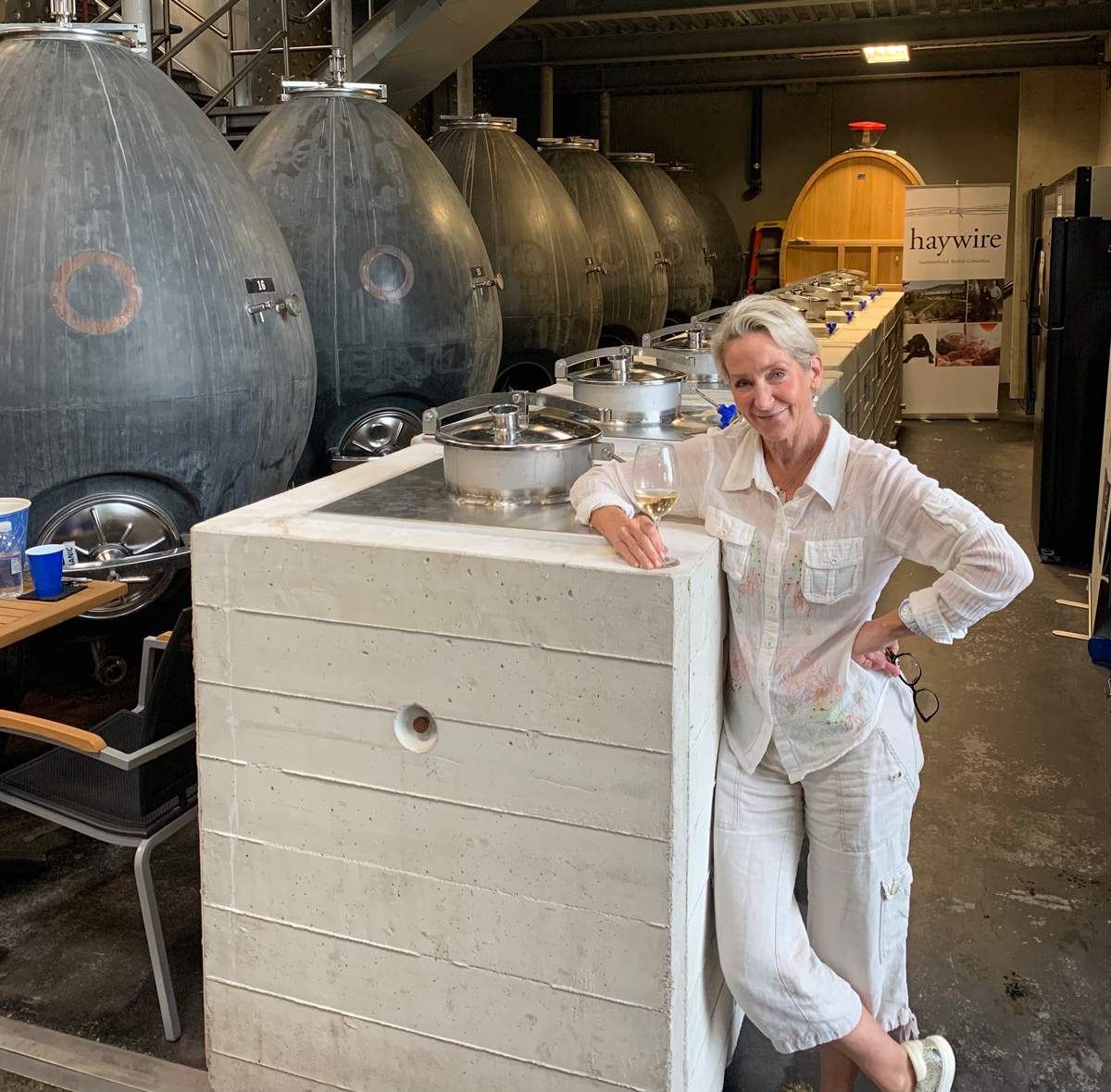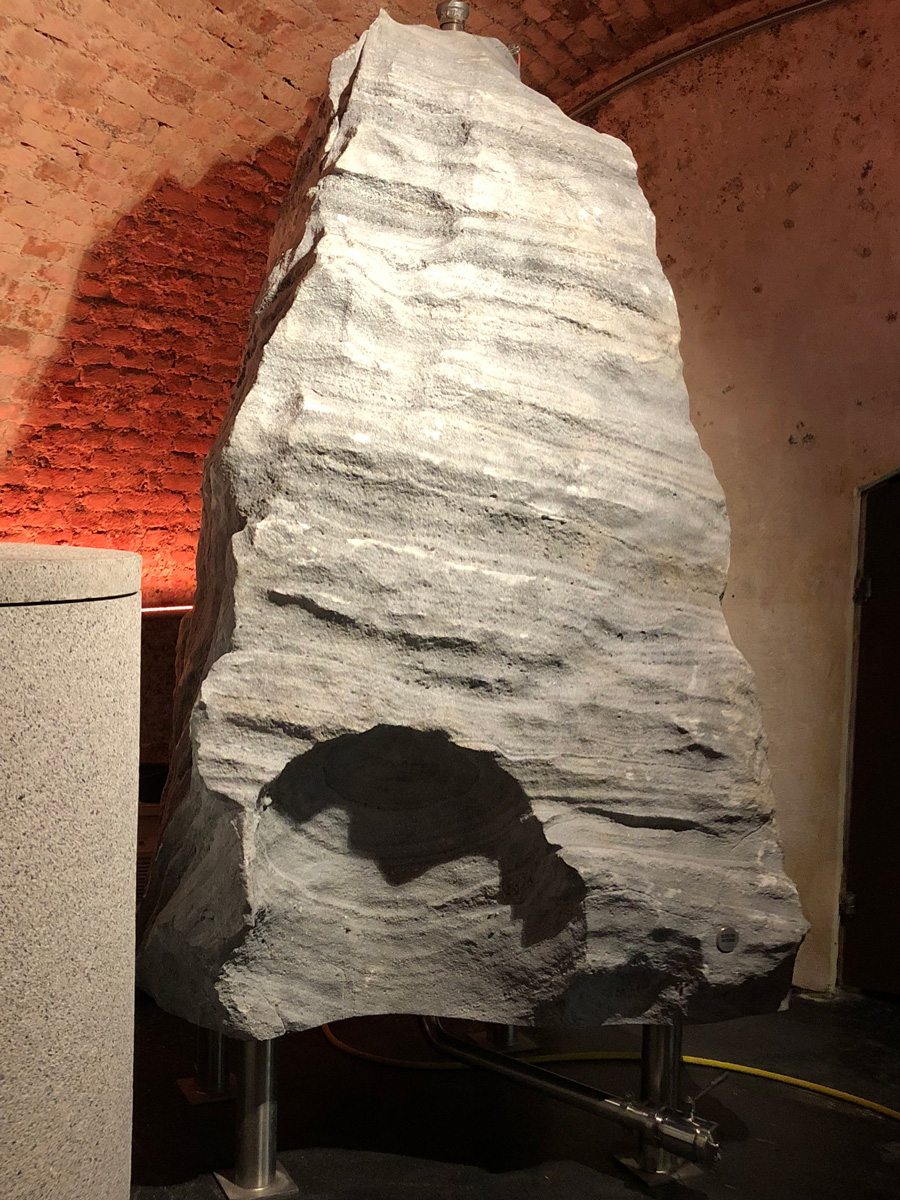
Wine Culture Magazine

Photos courtesy of CultWine
The exceptional 2018 Bordeaux vintage is a hotly anticipated upcoming release (pardon the climate change pun). After profound hailstorms and early summer rains, the season turned torrid and dry, keeping the Bordelais toiling in the vineyards doing everything possible to retain freshness and balance in grapes. Seems those efforts have paid off with critics writing in lavish superlatives about the reds and surprisingly crisp whites. Much buzz surrounds the release of first growth Château Mouton-Rothschild, for reasons both of supreme quality and its striking label. Printmaker and installation artist Xu Bing is renowned for a unique script called Square Word Calligraphy. The label art displays symbols that reshape Latin alphabet with Chinese characters, creating symbols that invoke a cultural blend that’s as relevant and topical as it is eye-catching and distinctive.

Clockwise from top left: Arinarnoa (photo courtesy of Wine-Searcher.com), Marselan (photo by Christophe Grilhe) and Liliorila grapes (photo courtesy of Pl@ntGrape).
As the planet heats up, Bordeaux is preparing for change. Early-ripening plummy, plush Merlot is the most planted grape in the world’s most famous wine region (more than 65 per cent of all red grapes), but the tendency to raisin and drop acid puts it in the hot seat as the authorities in Bordeaux plan for temperature increases and shorter growing cycles. Proven drought-resistant vines have been planted in the hallowed Left and Right Bank soils of Bordeaux, including four new red grapes: Arinarnoa, Castets, Marselan and Touriga Nacional.
Arinarnoa is an interesting cross developed in France in 1956 of hyper-tannic Tannat and Cabernet Sauvignon, and Marselan is a 1960s grape fusing Cab and heat-tolerant Grenache. Already grown in the south of France and Uruguay, Marselan has made notably successful wines. Touriga Nacional needs no introduction to Port aficionados, and this all-star grape should excel in the blue-chip terroir of Bordeaux.
Two white grapes are also on the new team: tiptop Alvarinho from northern Portugal and Spanish Galicia, and Liliorila, a fascinating cross of Chardonnay and Baroque, an obscure, full-flavoured grape from southwest France.
These varieties were only authorized for planting in November 2020 and will take a few years to show up in the wines. Even then, these grape trials restrict the amounts allowed in wines to minuscule percentages. The important thing is the far-sighted preparations for the inevitable, disruptive effects of climate change.
Land prices in the Okanagan Valley are stratospherically high now, reaching upwards of $300,000 for a planted acre of vineyard. This eye-popping price tag makes Napa Valley look affordable—you can still buy prime vineyards for $250,000-plus per acre—and Sonoma County is a bargain with vineyards going for $150,000 and up. Why is our land so pricy? Availability, pure and simple. Real estate is booming in Canada’s pocket desert, and the tussle between homes and grapes is driving prices up and up.

Photo courtesy of Stara trta
Only a hundred 250-millilitre bottles of Slovenia’s Old Vine Wine are made each year, bestowed as gifts for a chosen few. It features the red grape Žametovka, harvested from the world’s oldest known wine grape vine, Stara trta, which was planted in the city of Maribor during the Middle Ages. Many luminaries have received one of these precious bottles, including the Dalai Lama, Pope John Paul II, Bill Clinton and Brad Pitt. Even phylloxera, which decimated Slovenian vineyards in the 1870s, failed to fell the old soldier, nor did it perish during the Second World War when bombs hit the house against which this heroic vine stretches its cordons and faithfully bears fruit each year.

DJ Kearney photo
Okanagan Crush Pad winery has taken terroir to the next level. True to their mantra “place, not grape,” they recently conducted a fascinating trial in custom concrete tanks made onsite for the purposes of learning more about how grapes express both themselves and the land in which they grow.
OCP took sand and gravels from their three vineyards (Switchback and Garnet Valley in Summerland, and Seacrest in Oliver), and made square concrete 300-litre vats. Pinot Gris, Pinot Blanc and Pinot Noir grapes were then harvested from each vineyard, pressed and fermented in the vats. As a control, the same juice was also fermented in stainless steel barrel and neutral barrique. After fermentation and malolactic conversion the wines were settled and allowed to rest in their vessels for nine months. Then the tasting trials began, blind of course, as over 60 ace tasters assessed the wines. Do grapes express a deeper sense of terroir when fermented in a vat made from those vineyard soils? Do aromatics, flavours and structural elements respond differently?
These deep delving tank trials may be the first of their kind in the world—Pipette will reveal the results in the next issue.

DJ Kearney photo
The superb Austrian estate of Domäne Wachau is also thinking about teasing out terroir expression with this crazy fermenter carved from a boulder found on the property. Over two metres tall, Austria’s signature grape Grüner Veltliner should feel right at home inside this unique tank.

DJ Kearney is a Vancouver-based wine educator, consultant, speaker, judge and global wine expert. Creator of the New District Wine Club, she is also Terminal City Club’s Director of Wine and Vice-President of CAPS-BC, responsible for the Best Sommelier of BC competition.

DJ Kearney is a Vancouver-based wine educator, consultant, speaker, judge and global wine expert. Creator of the New District Wine Club, she is also Terminal City Club’s Director of Wine and Vice-President of CAPS-BC, responsible for the Best Sommelier of BC competition.
Copyright © 2025 - All Rights Reserved Vitis Magazine